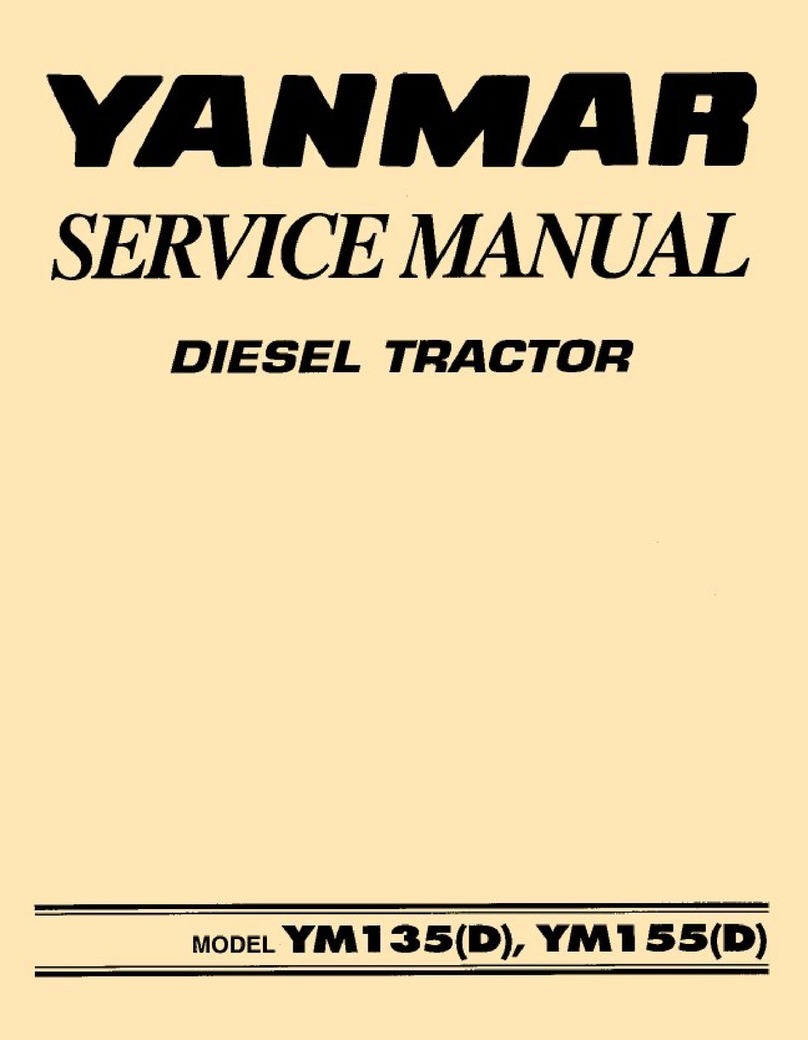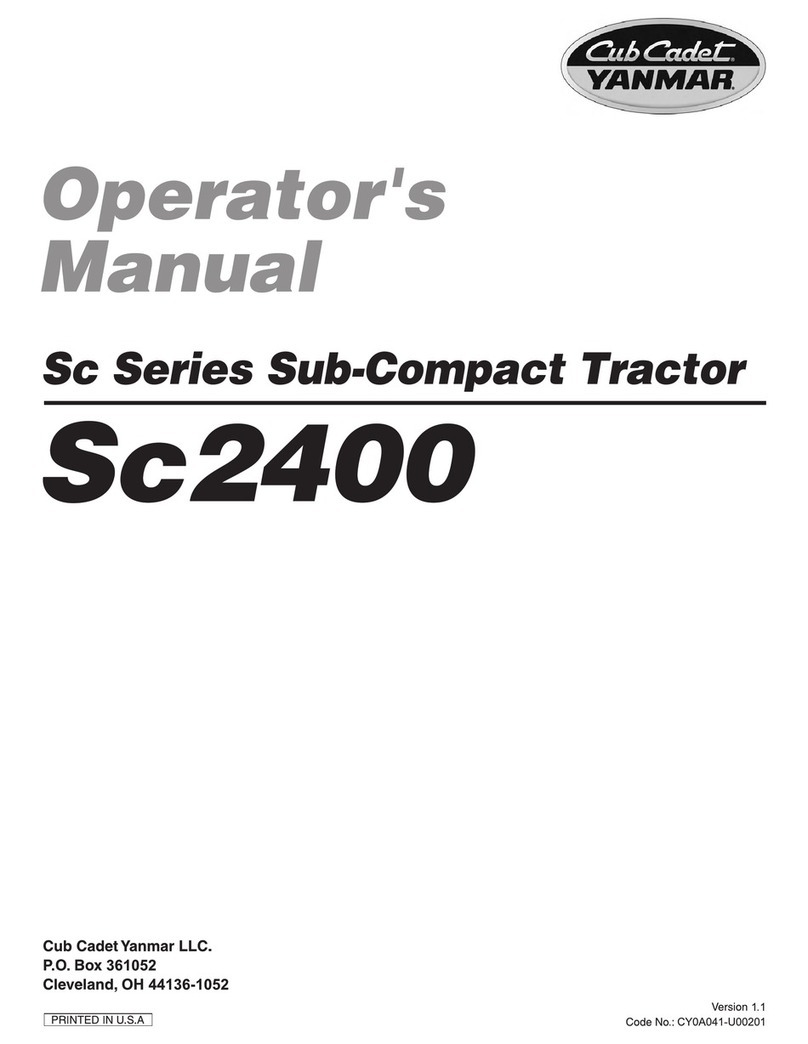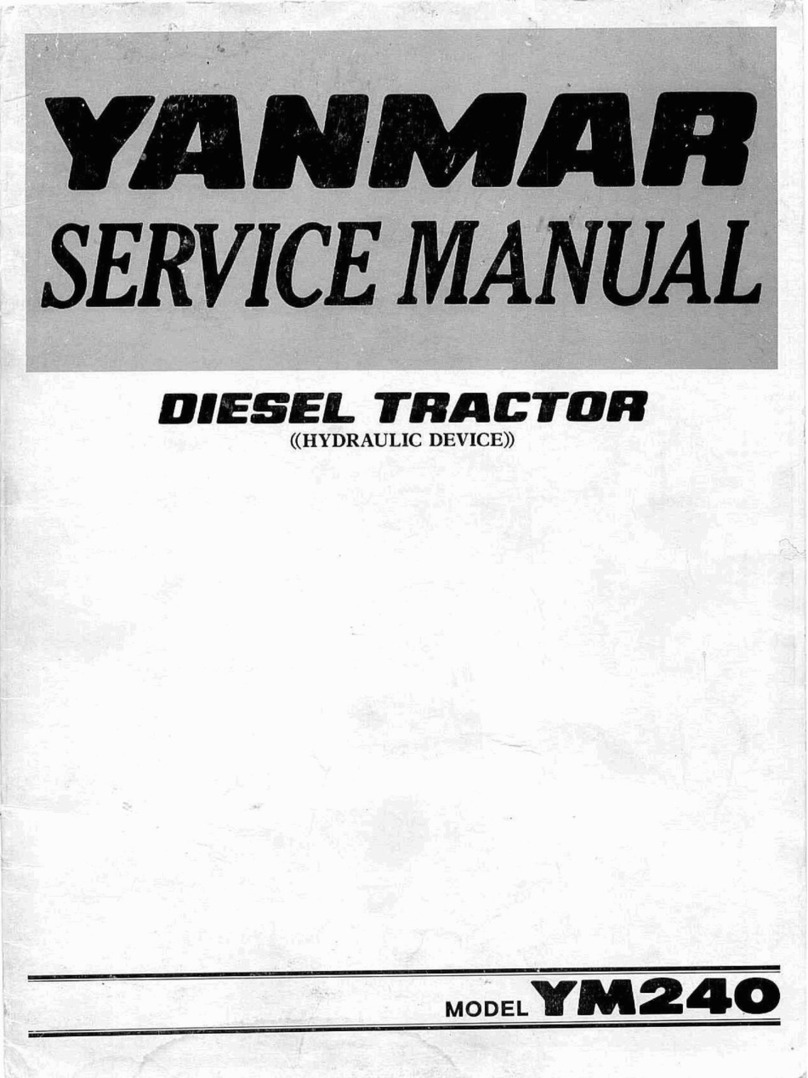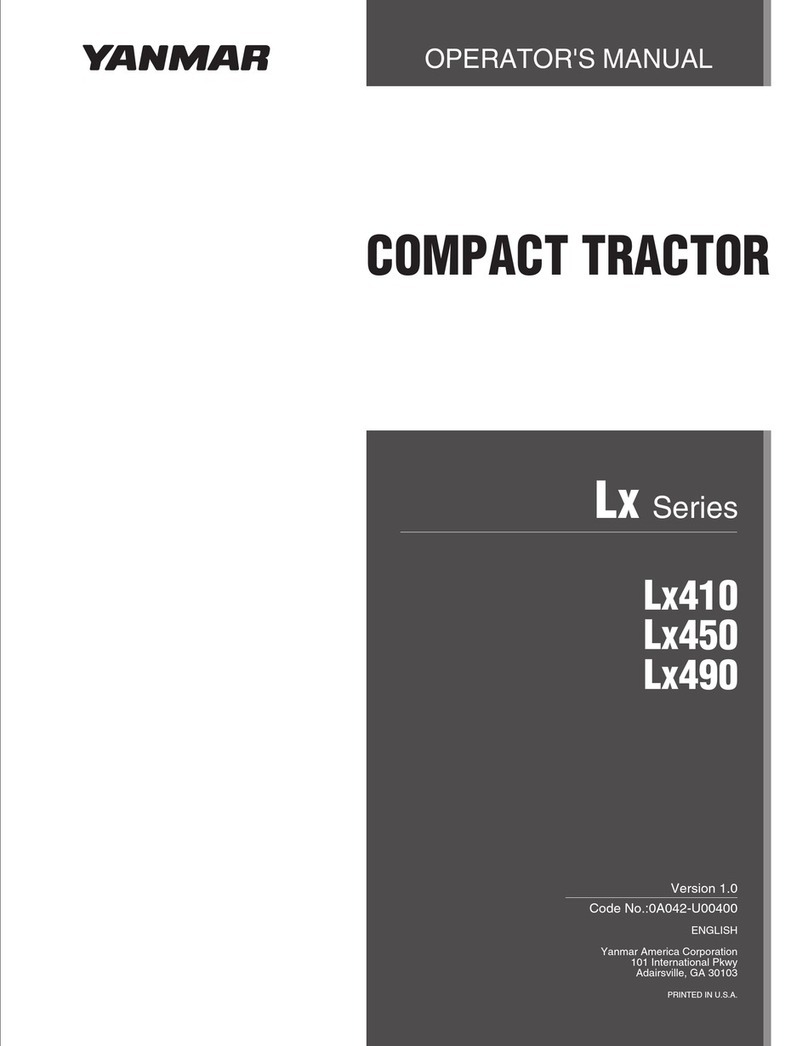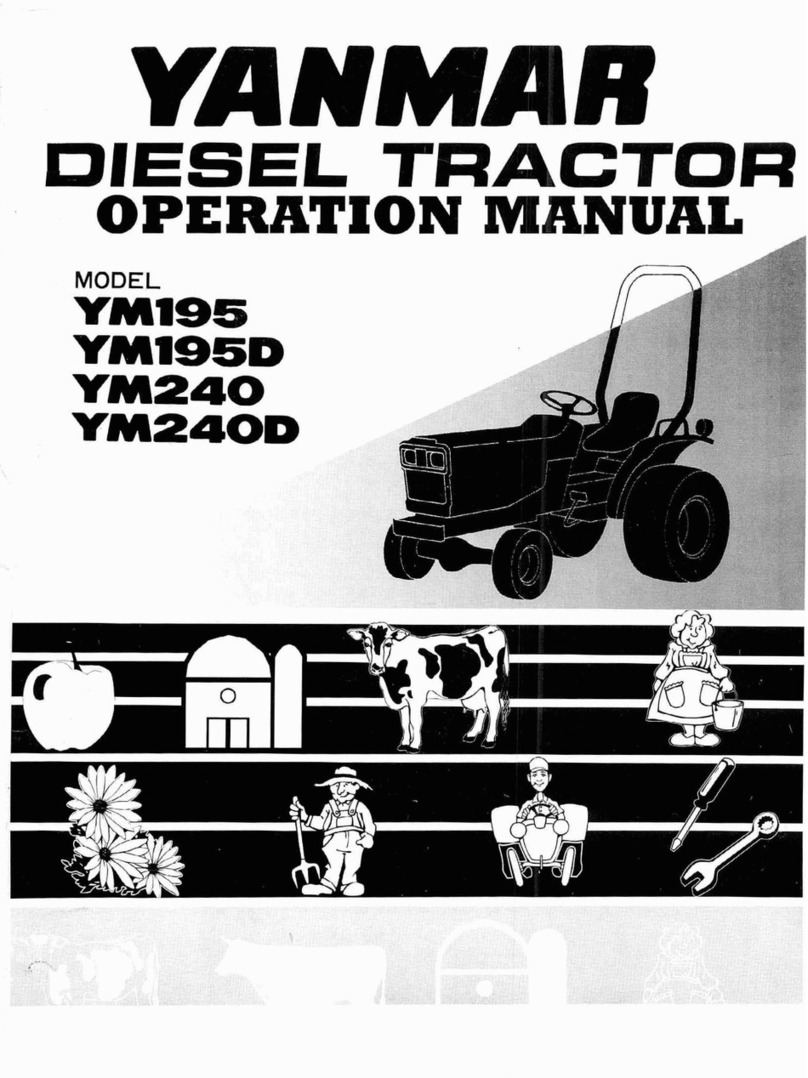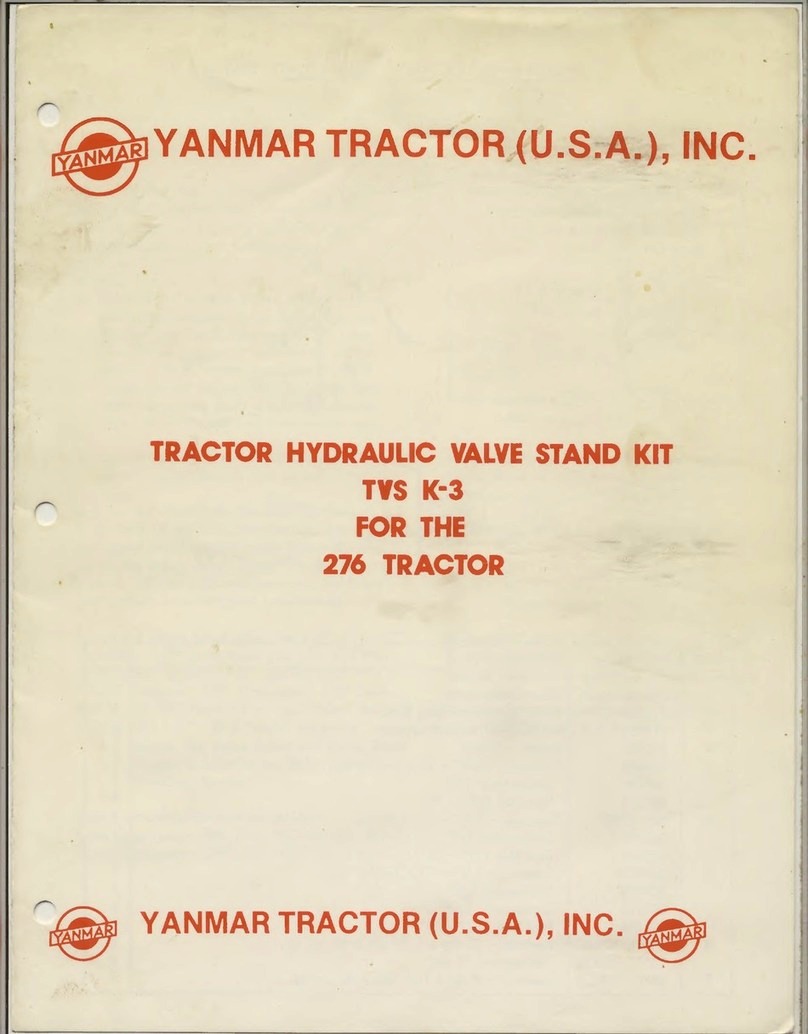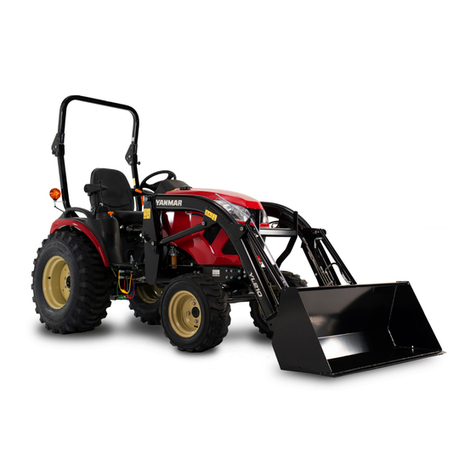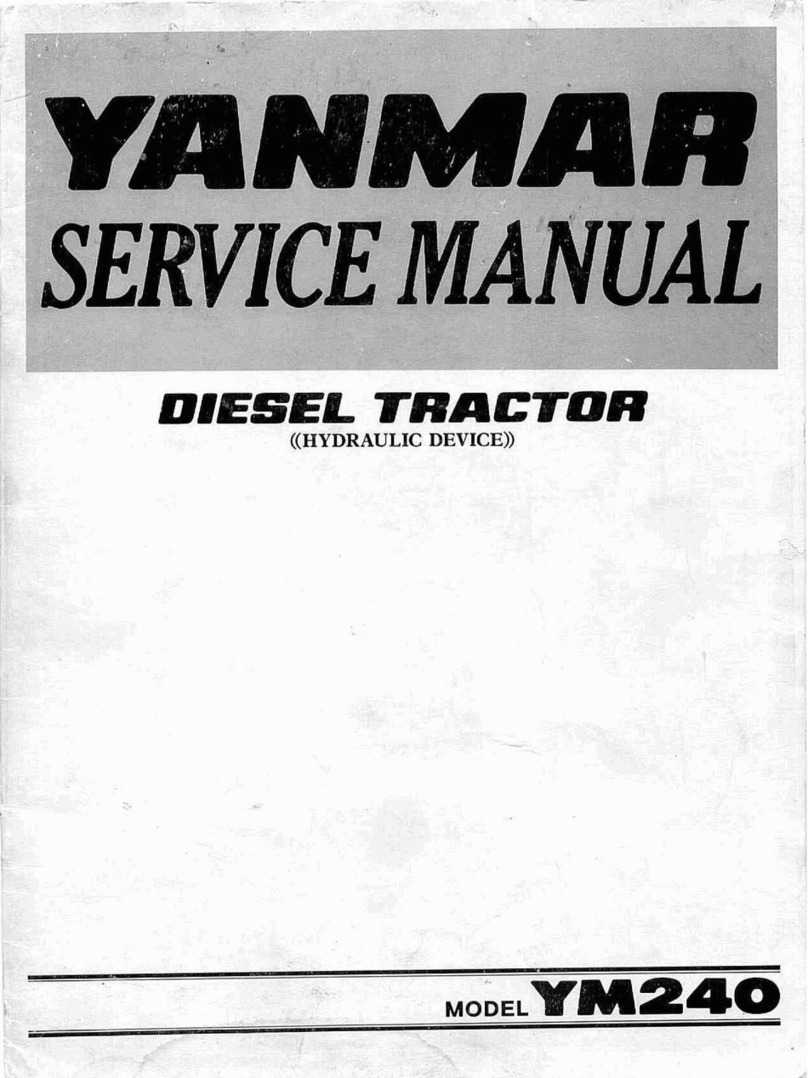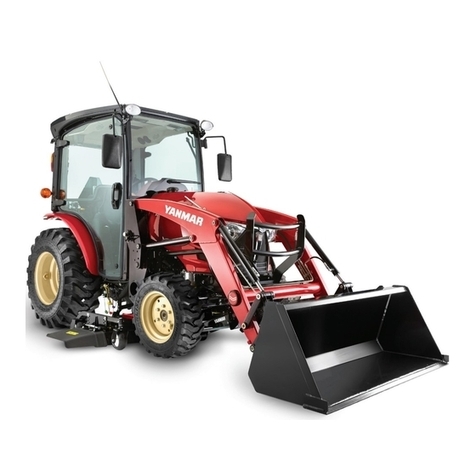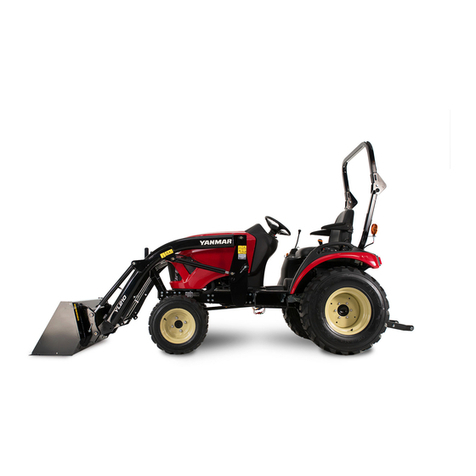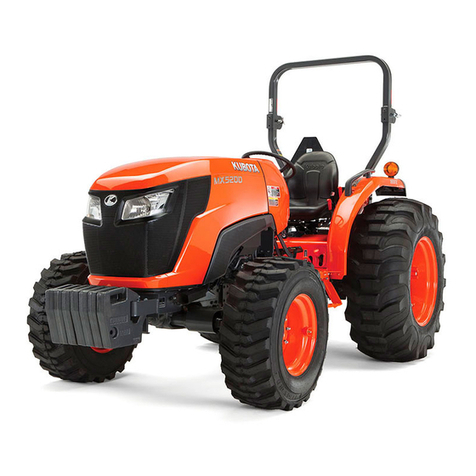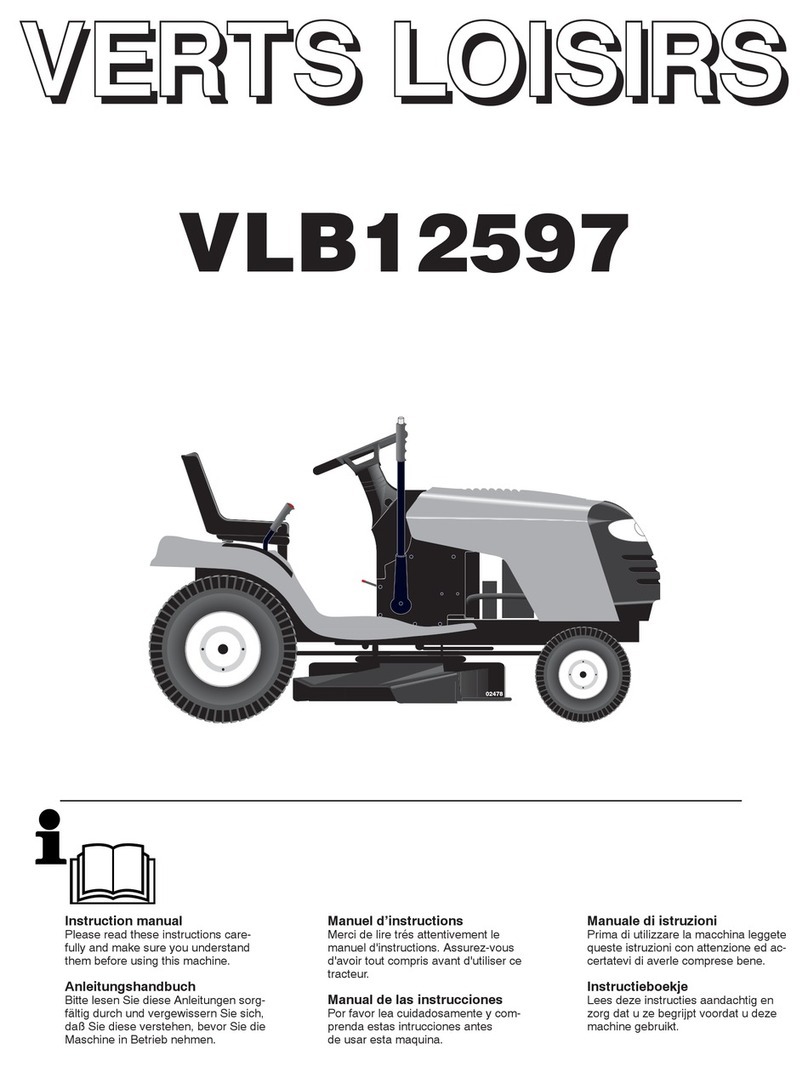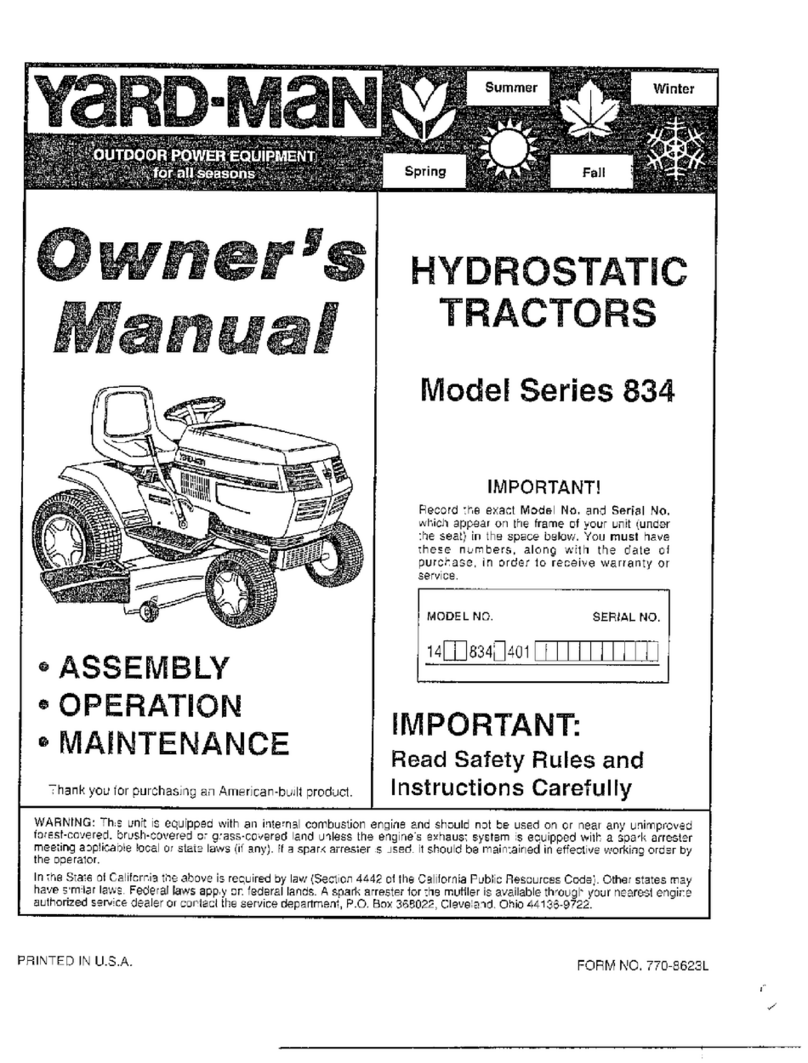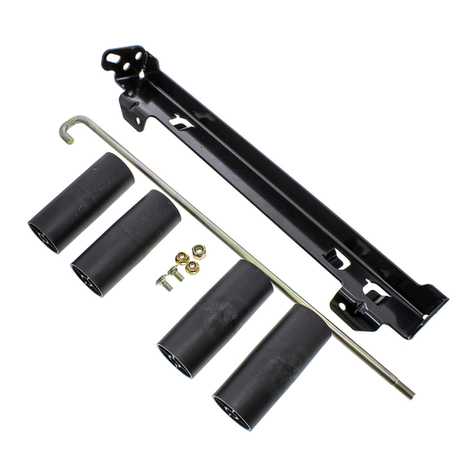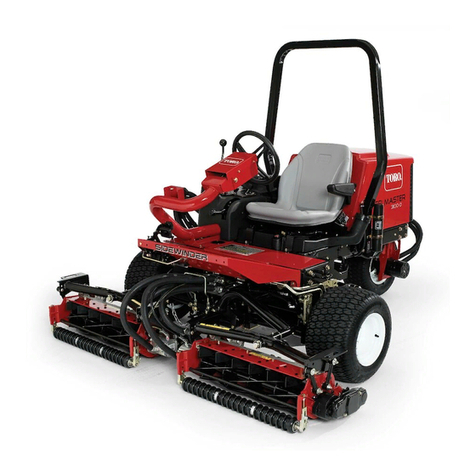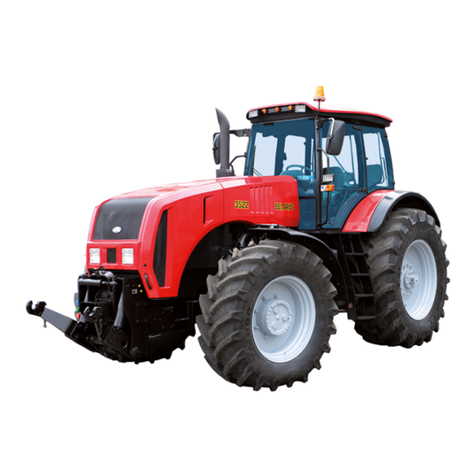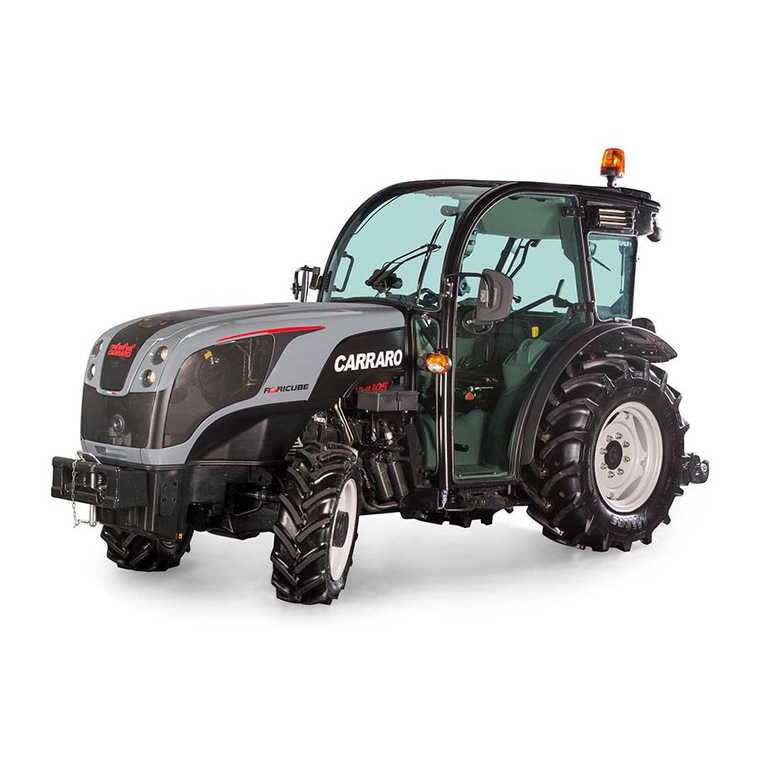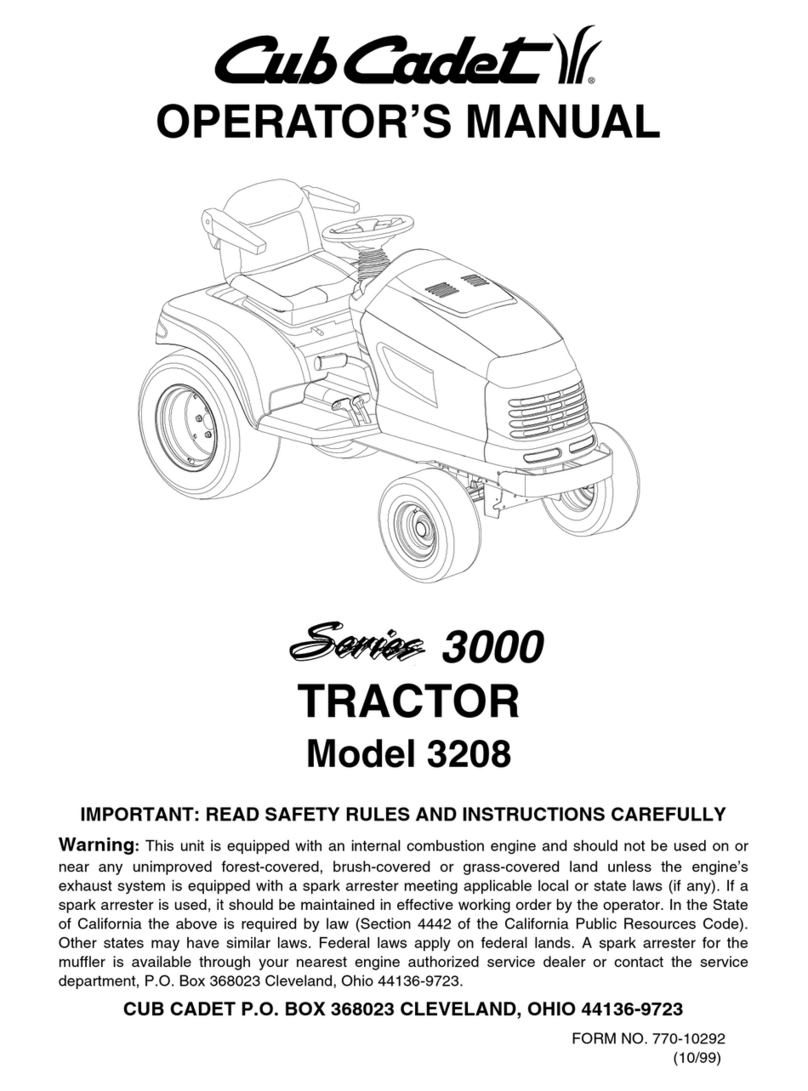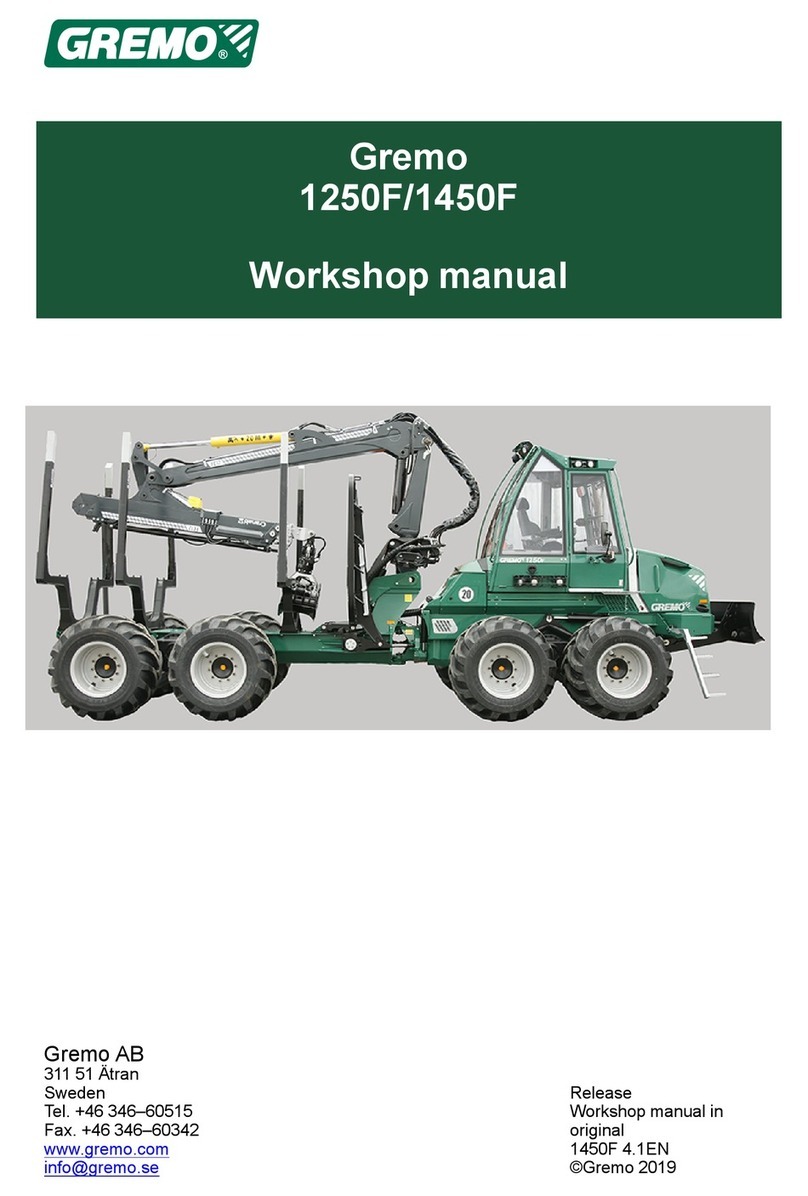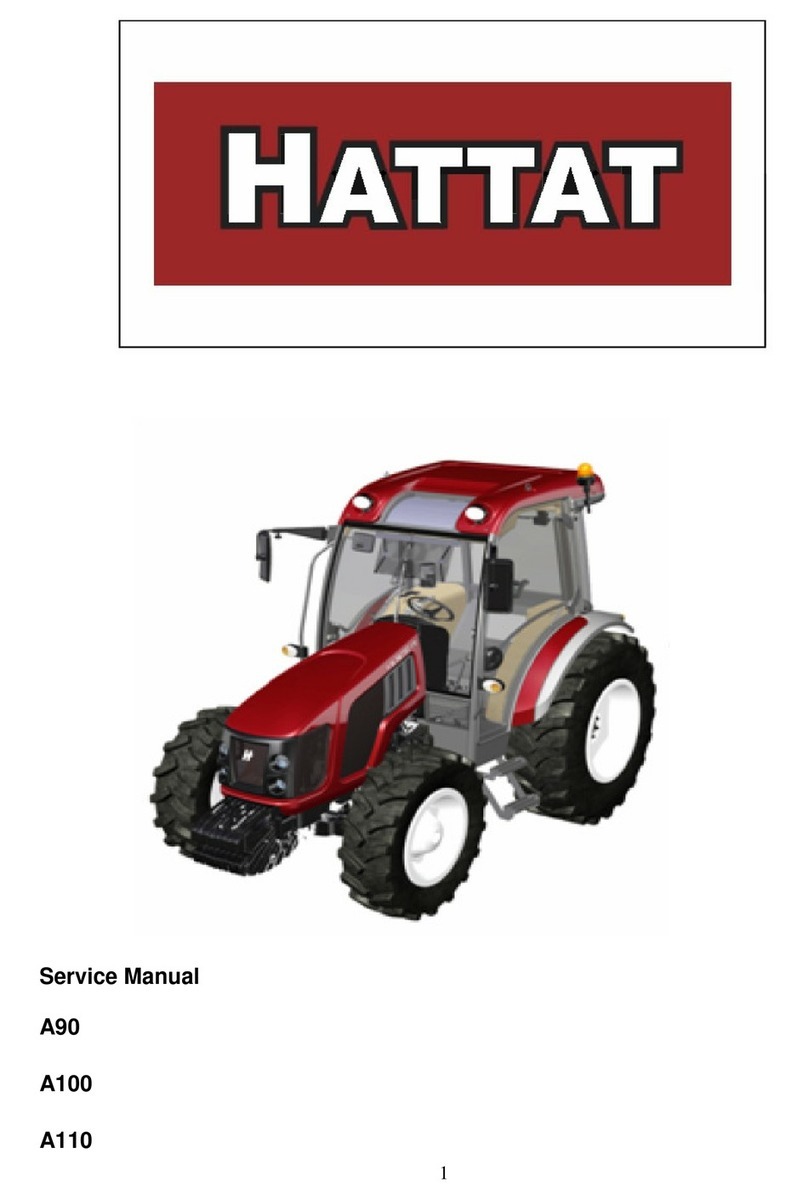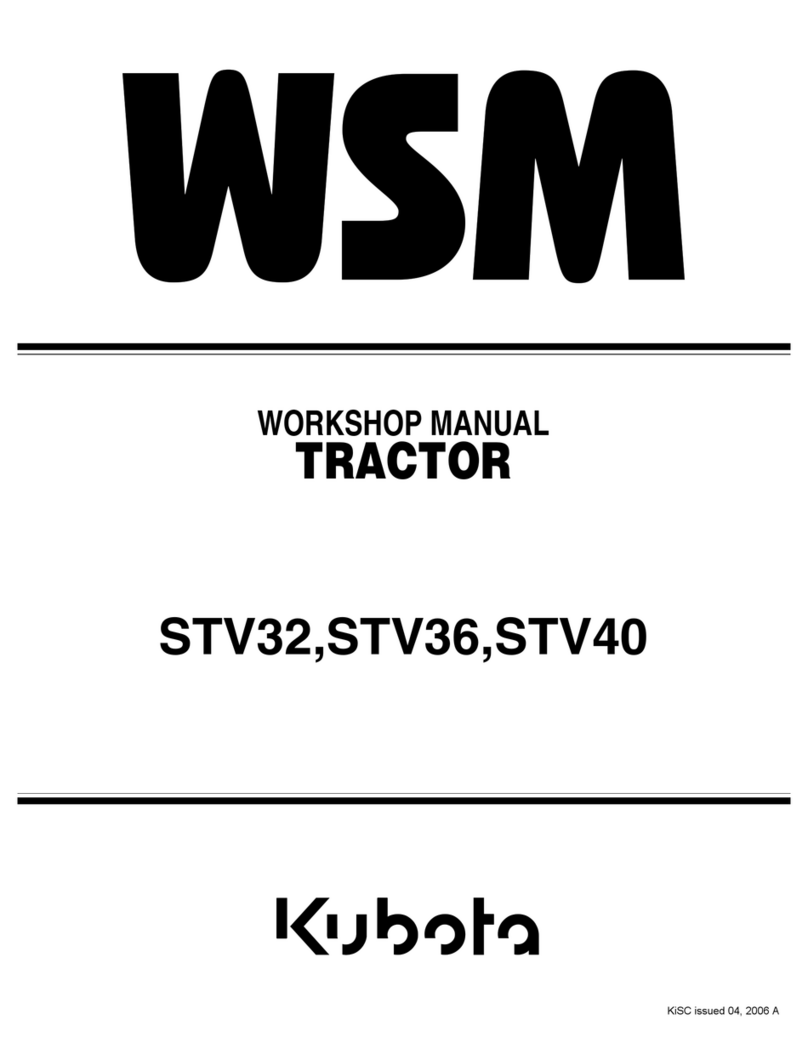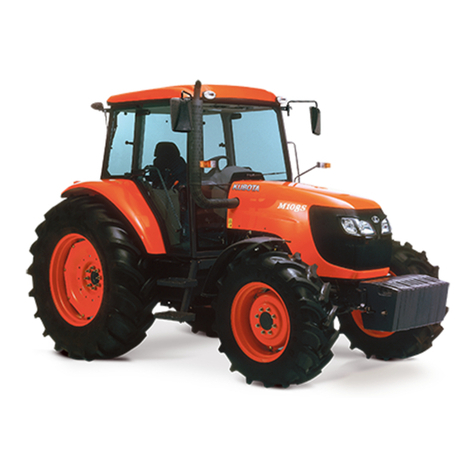
A
TO
ENSURE
SAFETY
IN SERVICE
1) Refer tooperationmanual for safety operationof tractor.
2) Make sure that dependable jacks of adequate capacity AND suitable stands (or wooden blocking) are used to securely
block up the machine when removingany of the wheels, or axles.
3)
If it becomes necessary to go under raisedequipment (i.e.: to performadjustments, etc), make certain that safety stands
are used.
4)
Do notmodify or alter this tractor or any of itscomponents or any tractor function.
5)
Never modify structural member of ROPS (Roll-over protective structure) by welding, bending, grinding or cutting, as
this may weaken the structure.
If any component
is
damaged, replace
it.
Do not attempt repair.
6)
If ROPS
is
loosened or removed for any reason, make certain all partsare installedcorrectly. Tighten mountingbolts to
propertorque.
7)
Use correct tools and equipment. Before servicing the tractor: locate the tractor on a firm level surface; lower imple-
ment;
set
the parkingbrake; place thegear inneutral; stop the engine and block wheels.
8) Service or check the tractor after
it
has completely cooled off. Avoid touching the muffler, radiator and other high
temperaturedpartsuntil they have cooled off.
9)
Under normal
circumstances,
rad~atorcap should not be removed. Add coolant to cooling systemthrough coolant sub
tank.
If radiator cap must
be
removed, do not remove
it
when engine
is
hot. Shut the engine off and wait until itcools. Then
turnthe cap slowly to the first stop to relieve pressure before removing itcompletely.
h
10)
Wait for all moving parts tostop COMPLETELY before attemptingservicing.
11) Keep hands, feet and clothingasafe distanceaway from moving belts, pulleys and any other movingpart that may cause
injury. Make sure that all safety shields are installed.
12) Be extra careful when performingany checks, inspections, adjustments or tests that requireoperatingthe engine, operat-
ing the hydraulic controls, or with the machine in motion. DO NOT make any check, adjustment, inspection or test
under these stated conditions..
.
UNLESS the procedures
specifically
recommend this practice, and THEN ONLY
WITH STRICT ADHERENCE TO RECOMMENDED PROCEDURES AND SAFETY RULES.
13) Before any attempt is made to remove any hydraulic component, make certain that the hydraulic pressure within the
system
is
relieved even ifthe engine
is
not running.
14)
Escaping fluid under pressure can penetrate the skin causing serious injury. Relieve pressure before disconnecting
hydraulic or other lines. Tighten all connections before applying pressure. Keep hands and body away from pinholes
and nozzles which eject fluids under high pressure. Use a piece of cardboard or paper to search for leaks. Do not use
your hand.
If any fluid
is
injected intotheskin, itmust be surgically removed within afew hours by
a
doctor familiar withthis type
injury or gangrene may result.
15) Disconnect the battery ground cable before working on the electrical system or working inany area where you might
come in contact with electrical components. Disconnectground cable first and install last. Never put tools or metals
on abattery.
Be sure there
is
plenty of ventilationbeforechargingthe battery. Gas of battery
is
dangerous.
If electrolyte
is
contactthe skin, eye or clothing, flush with water and call physicianimmediately.
-


